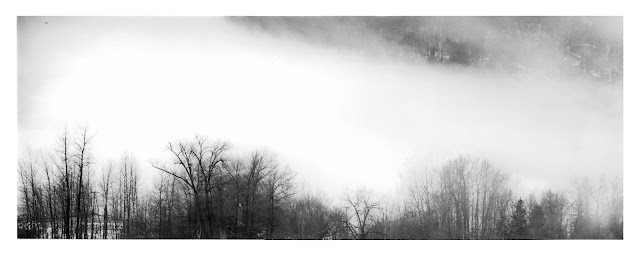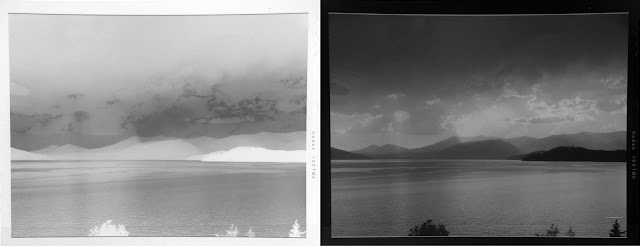More 'Ma': Film from Digital Print

On my pursuit of negative space images, I find these are hard to plan for and one must try and be alive to the idea when they happen. This one I captured on my regular winter walks through town. I was shooting in a black and white mindset with my Fuji GFX 50s ii digital camera set to a 65:19 aspect ratio. This is my favorite setup to use. Presetting the camera in this way mimics some of my film exploits and lets the mind settle on a certain style by removing choices. Fixing the aspect ratio forces a compositional dynamic that opens up possibilities for me as much as it forces a constraint. In this case the low cloud and fog between the screen of winter trees and the mountain created this veil of mystery and lets one's mind imagine the whole scene. The screen of trees provide some tonal weight to help ground the image. I had this image converted to a 6x7 medium format negative using the services of Gammatech. This allows me to put it in my 4x5 enlarger. I set the condensers for the





